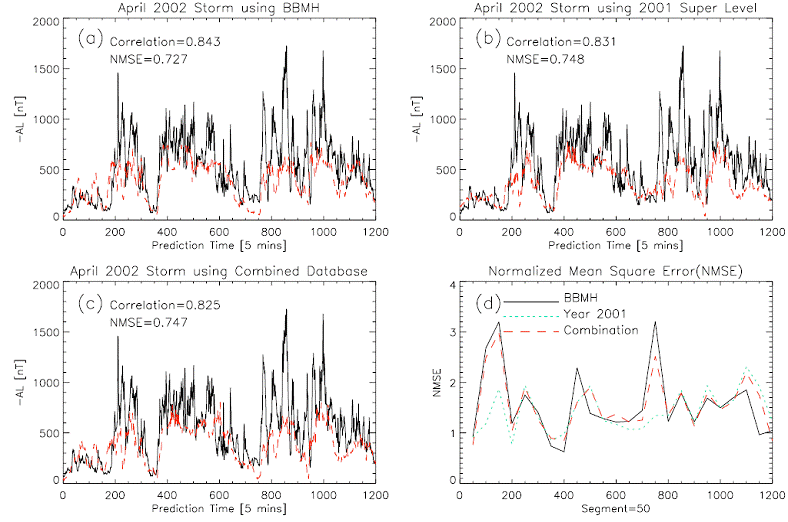
Space and Plasma Physics
Space Weather Forecasting

Space and Plasma Physics
Space Weather Forecasting
Space Weather Forecasting
Space weather specifies the state of the geospace environment and forecasts are essential to protect the technological infrastructure of our society. Many extreme space weather events have severely damaged satellites, power transmission systems, aircraft communication and many other civil and military systems. The geospace environment is continuously driven by the solar wind, bringing the disturbances from the sun. The complexity of this interaction makes space weather forecasting a challenge and many approaches are used to develop space weather forecasts. The nonlinear dynamical systems approach has provided a characterization of the geospace environment as a dynamical system and thus provided the basis for its predictability (Sharma, 1995). With this approach the state of the magnetosphere can be forecast readily, as shown in the case of the Aprill 2002 geospace storm.
The relativistic electron at geosynchronous orbit can cause severe damage to the hundreds of spacecraft in that region and these "killer" electrons are a major concern from the space weather perspective. The data of the electron fluxes from LANL spacecraft and of the solar wind from upstream spacecraft are used to develop data-derived models that predict the average daily intensity of the relativistic electrons and the probabilities of extreme events (Ukhorskiy et al., 2004).

[ Predictions of the magnetospheric
dynamics in terms of the AL index. The predicted values (red) provide the
trend in
the dynamics and the big (extreme) events are predicted using conditional
probabilities (Jian Chen, Ph.D. Thesis, 2007) ]
The research on space weather forecasting has been funded (PI: Dr. Surja Sharma) by NSF and the National Space Weather Program.